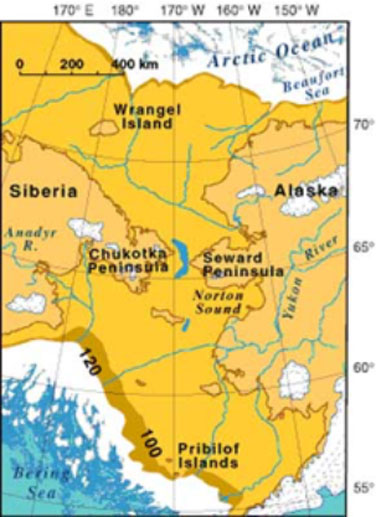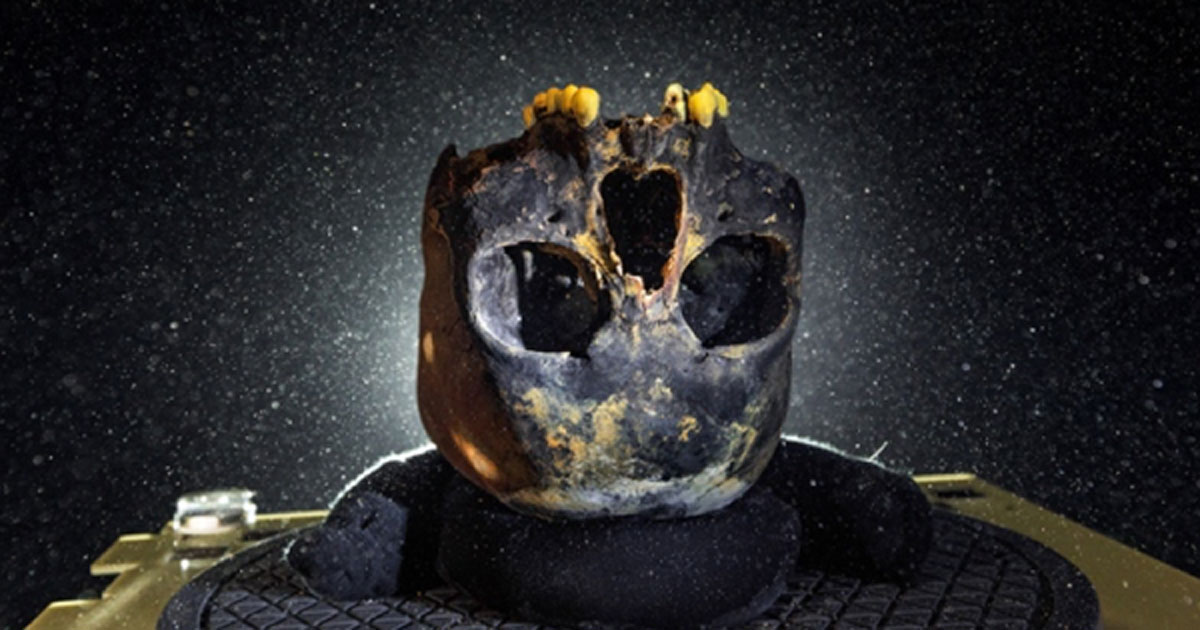Bones of a Teenage Mother Who Died 12,000 Years Ago Tell Researchers a Dark Story of Carnivores and Malnutrition
One of the earliest known people to live in the Americas, a girl dubbed Naia who roamed the Yucatan Peninsula about 12,000 years ago, was slender and short and endured hardship, childbirth, and death all by age 16 or so. Naia’s remains were found in an underwater cave so huge, deep, and dark that researchers named it Hoyo Negro or Black Hole.
Researchers have determined she was aged 15 to 17 when she died, which probably happened when she fell into Hoyo Negro. At that time, the cave was not underwater because sea levels were considerably lower, by as much as 300 feet (91.4 meters).
- Underwater discovery in submerged Mexican cave provides glimpse of First Americans
- Did Paleoamericans Reach South America First?

A diver in a Yucatan cenote. (Public Domain)
From the state of her leg bones, it appears she traveled a lot on foot. The smoothness of her arm bones where the muscles attached indicates she apparently didn’t carry much with her or do much grinding of seeds or working of animal skins, says a report on Nature.com about recent research and analysis of Naia’s bones.
The Nature article says her build was so slight her upper arm bone was about the size of an adult male finger. This may have been because of poor nutrition. Her leg bones have lines marked by halted growth. She might have gotten too little food or been infested with parasites that blocked absorption of nutrients. Her teeth show Naia’s nutrition was “rather limited quite often,” according to archaeologist James Chatters.

Naia’s cranium (HoyoNegro.org)
Her pelvis is also pitted in a way that is visible in young, slender women who have given birth, Nature says.
“She’s telling us a story. It was a very hard life,” Nature.com quotes Chatters, who is with Applied Paleoscience in Bothell, Washington. He is the principal investigator of the research on the young woman for Mexico’s National Institute of Anthropology and History in Mexico City.
The site HoyoNegro.com describes the cave where Naia’s remains were found:
“On the floors and walls of Hoyo Negro the divers discovered the remains of many animals from the late Pleistocene period, most of which are now extinct. They are remarkably well-preserved - intact and unbroken except by their falls over 100 ft to the floor of the cave. Giant ground sloths, gomphotheres [elephant-like creatures], saber-toothed cats, and bears, pumas, peccaries and many other animals entered the chamber at least 8,000 years ago, tunnels leading into the pit were mostly dry. At that time the sea level was considerably lower (up to 300 ft) transforming these underwater passages into dry caves that animals could walk through in search for water or refuge.”

A carnivore’s skull from the Hoyo Negro (Photo from HoyoNegro.org)
Researchers announced that they had first found the skeleton in 2007, but intruders disturbed it. So, in 2014 and 2016, divers carried the bones out, which allowed for better analysis and study.
The researchers led by Chatters presented the results of their analysis of Naia’s remains at the March 30 meeting of the Society for American Archaeology in Vancouver, Canada. As Nature.com states:
“Naia has already helped to illuminate the origins of the first Americans. In 2014, Chatters and his colleagues reported that her DNA confirms the idea that a single group of Asian emigrants gave rise to both the earliest American settlers and modern Native Americans.”
This statement may be controversial among Native Americans. It has been argued that their ancestors were not necessarily solely from northern Asia and may have come from across the oceans from Africa, East Asia and islands near there and Europe.
- Top Ten Underwater Discoveries of 2014
- Yucatan Children Learn Math Better Thanks to Ancient Mayan Numeral System

Bering land bridge. (Public Domain)
The Nature article linked in the quote above states that researchers examining DNA of Amazon natives determined that the first Americans came across the Bering land bridge between Alaska and Asia about 15,000 years ago—well before Naia was born. Many Native Americans also say their ancestors very well may have been here longer than 15,000 years.
Whenever people first arrived, Naia’s remains indicate some early Americans were in a wild world of large carnivores and possibly suffered nutritional deficits and other hardships.

The Lithic peoples or Paleo-Indians are the earliest known settlers of the Americas. (Public Domain)
Top Image: The girl’s skull was found along with most of her skeleton deep in a cave now inundated with water on the Yucatan Peninsula of Mexico. Source: Paul Nicklen/NGC
By Mark Miller




















Comments
It is not unprecedented. There have been huge swings of temperature in the past that happened very quickly, as much as 18 degrees C in a decade in and around the Younger Dryas.
In any case the warmer periods have always been more stable in terms of weather and life is more prolific. The Medieval Warm Period, with global average temps higher than today, was a time of plenty. The little ice age which followed caused crop failures, famine, malnutrition, and plague.
It has long been established by science that earth went through many episodes of cooling and warming during its history, so this article brings nothing new about global warming.
The alarming fact is that the annual mean temperature of earth raised one full celsius degree just between 1970 and 2016, which is a totally unprecedented speed as older warming episodes extended over centuries.
This articles proves something few will think about. That arctic ice has been melting for millennia and there is no such thing as man made global warming...ok...here come the barbs in 1,2,3...